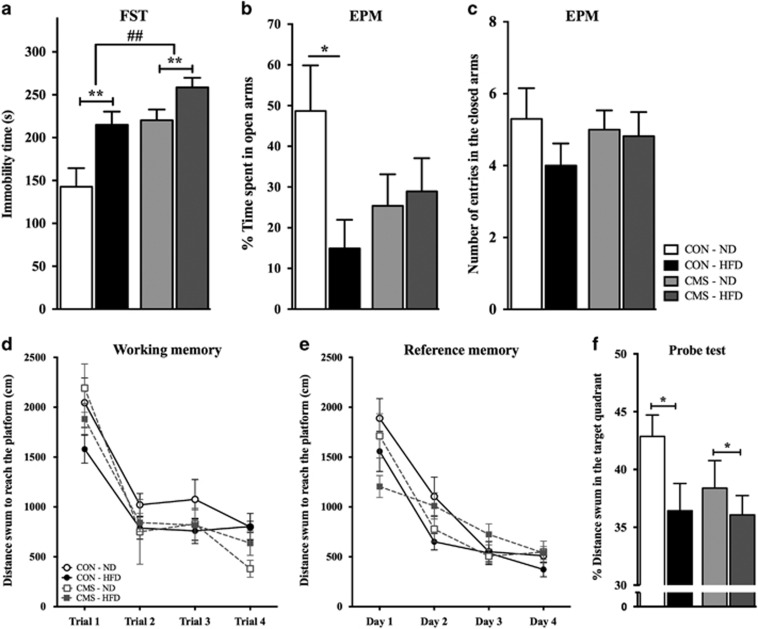Figure 5.
Behavioral assessment. (a) Forced swimming test (FST). Learned helplessness assessment by the time of immobility in the 5 min of testing. (b) Elevated plus maze (EPM). Anxiety-like behavior evaluation by the time spent in the open arms. There is an interaction effect between diet and CMS between groups. (c) EPM. Number on entries in the open arms indicate the locomotor activity. (d) Spatial working task. Each trial shows the average of the distance swum to reach the platform in the same trial in all 4 days of the test, which illustrates the learning progression. (e) Reference memory. Each day indicates the average distance swum in the 4 trials of the same day to evaluate the speed in learning the position of the platform. (f) Probe test. Distance swum in the quadrant of the new positioned platform after the reference memory task indicates the animal’s behavioral flexibility. For all the figures (n=11 each control group, n=8 CMS-ND group, n=12 CMS-HFD group; *: P<0.05; ** and ##: P<0.01. Data presented as mean±s.e.m.). * and ** indicate diet and, ## indicates CMS overall effects between groups. CMS, chronic mild stress; HFD, high-fat diet; ND, normal diet.

